A minimized SOP expression contains the fewest possible terms with the fewest possible variables per term.
After completing this section, you should be able to
u Map a standard SOP expression on a Karnaugh map
u Combine the 1s on the map into maximum groups
u Determine the minimum product term for each group on the map
u Combine the minimum product terms to form a minimum SOP expression
u Convert a truth table into a Karnaugh map for simplification of the represented expression
u Use “don’t care” conditions on a Karnaugh map
Mapping a Standard SOP Expression
a 1 is placed on the Karnaugh map for each product term in the expression.
When an SOP expression is completely mapped, there will be a number of 1s on the Karnaugh map equal to the number of product terms in the standard SOP expression. The cells that do not have a 1 are the cells for which the expression is 0. Usually, when working with SOP expressions, the 0s are left off the map.
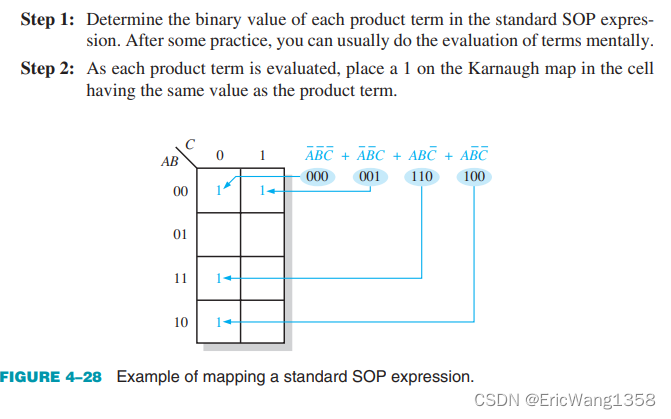
Mapping a Nonstandard SOP Expression
A Boolean expression must first be in standard form before you use a Karnaugh map. If an expression is not in standard form, then it must be converted to standard form by the procedure covered in Section 4–6 or by numerical expansion. Since an expression should be evaluated before mapping anyway, numerical expansion is probably the most efficient approach.
As another example, assume that one of the product terms in a 3-variable expression is B (remember that a single variable counts as a product term in an SOP expression). This term can be expanded numerically to standard form as follows. Write the binary value of the variable; then attach all possible values for the missing variables A and C as follows:

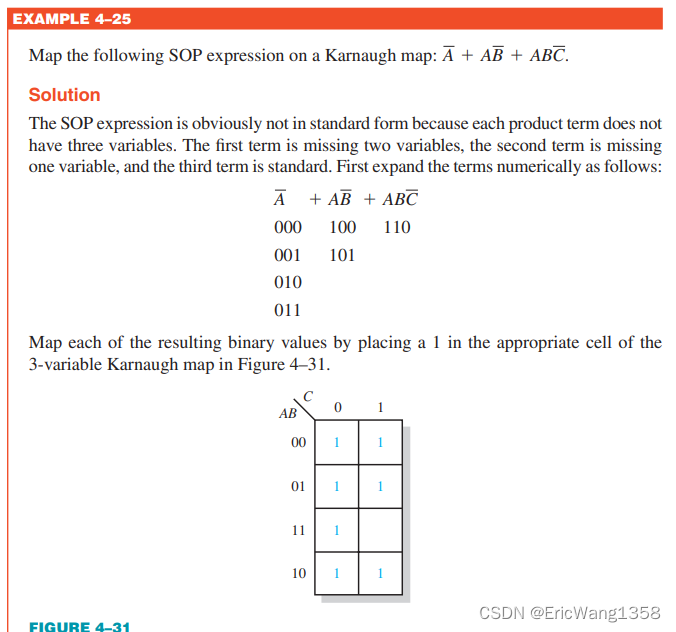
Karnaugh Map Simplification of SOP Expressions
The process that results in an expression containing the fewest possible terms with the fewest possible variables is called minimization. After an SOP expression has been mapped, a minimum SOP expression is obtained by grouping the 1s and determining the minimum SOP expression from the map
Grouping the 1s
You can group 1s on the Karnaugh map according to the following rules by enclosing those adjacent cells containing 1s.
The goal is to maximize the size of the groups and to minimize the number of groups.

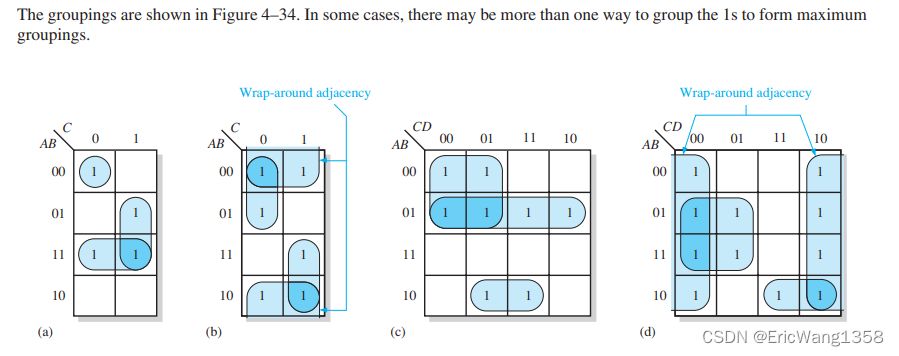
Determining the Minimum SOP Expression from the Map
The following rules are applied to find the minimum product terms and the minimum SOP expression:
Group the cells that have 1s. Each group of cells containing 1s creates one product term composed of all variables that occur in only one form (either uncomplemented or complemented) within the group. Variables that occur both uncomplemented and complemented within the group are eliminated. These are called contradictory variables.
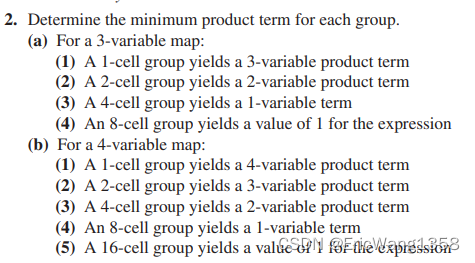
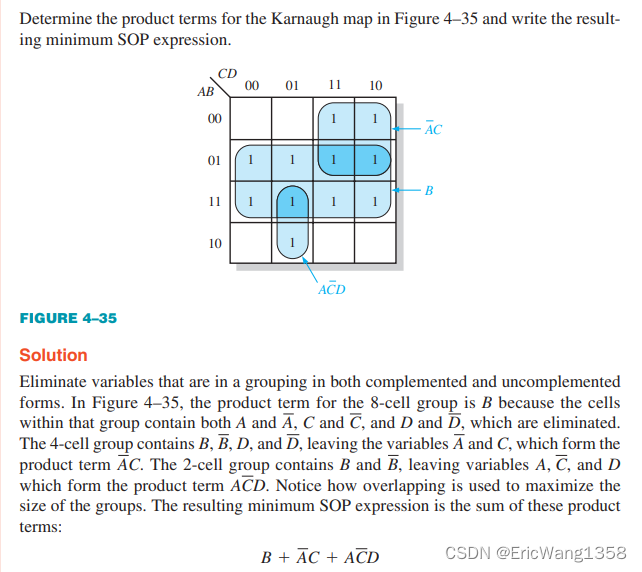
Mapping Directly from a Truth Table
Recall that a truth table gives the output of a Boolean expression for all possible input variable combinations. An example of a Boolean expression and its truth table representation is shown in Figure 4–39. Notice in the truth table that the output X is 1 for four different input variable combinations. The 1s in the output column of the truth table are mapped directly onto a Karnaugh map into the cells corresponding to the values of the associated input variable combinations, as shown in Figure 4–39. In the figure you can see that the Boolean expression, the truth table, and the Karnaugh map are simply different ways to represent a logic function.
“Don’t Care” Conditions
Sometimes a situation arises in which some input variable combinations are not allowed. For example, recall that in the BCD code covered in Chapter 2, there are six invalid combinations: 1010, 1011, 1100, 1101, 1110, and 1111.

The “don’t care” terms can be used to advantage on the Karnaugh map. Figure 4–40 shows that for each “don’t care” term, an X is placed in the cell. When grouping the 1s, the Xs can be treated as 1s to make a larger grouping or as 0s if they cannot be used to advantage. The larger a group, the simpler the resulting term will be.
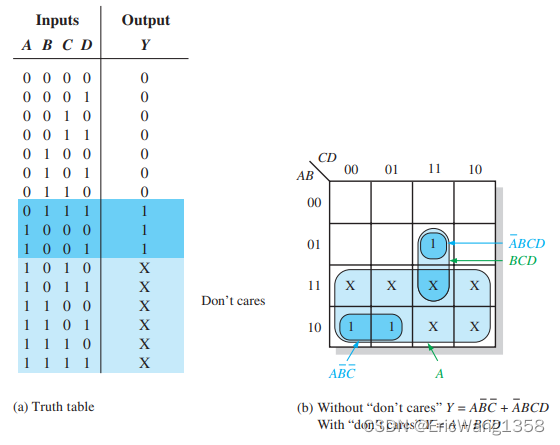
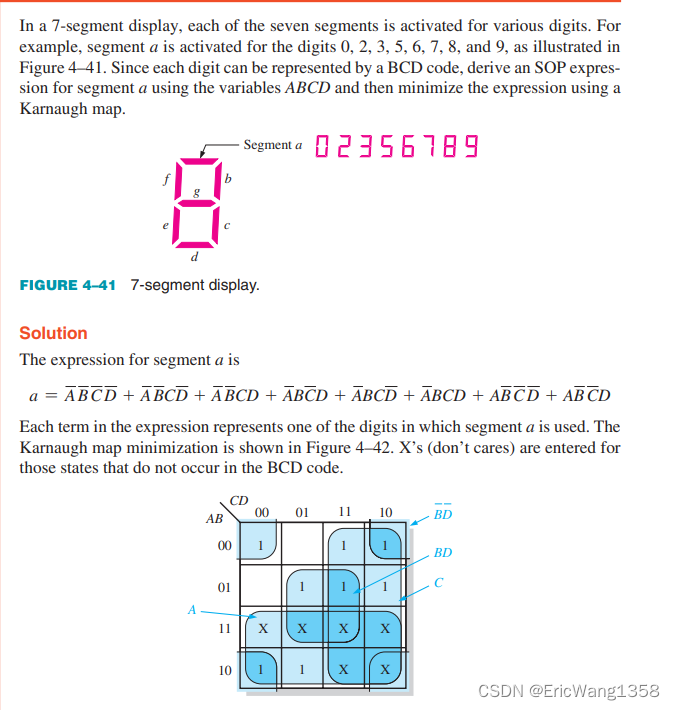






















 2437
2437











 被折叠的 条评论
为什么被折叠?
被折叠的 条评论
为什么被折叠?








